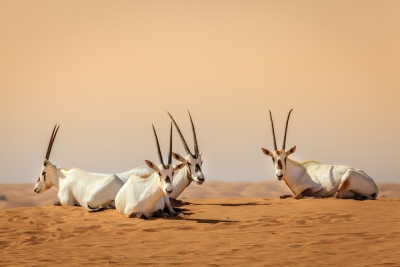
About 50 years ago, the Arabian oryx went extinct in the wild. Today, their numbers in the wild stand at more than 1,000, making it one of the most impressive wildlife conservation stories in the world.
The Arabian onyx was once widespread in the Arabian Peninsula. Growing about a metre tall and weighing nearly 70 kg, these antelopes have adapted to the harsh conditions of the desert. The animal has two predators-wolves and humans, and the latter was responsible for its large-scale destruction. With increased access to motor vehicles and modem rifles, the rate of onyx killing increased too, in an unsustainable fashion. When the last animal was shot in 1972, the antelope went extinct in the wild. Soon, “Operation Onyx which included the World Wildlife Fund and Phoenix Zoo in the US, was set up to establish a herd in captivity to prepare to reintroduce them into the wild”
As many as 10 animals were released into the wild in 1982 in Oman. Over the next few years, many more were released in different places, including Saudi Arabia, Israel, the UAE, Jordan, and Bahrain. The numbers reached a reassuring level in 2011 that the International Union for the Conservation of Nature (IUCN) reclassified the antelope as vulnerable from “endangered.” It was also the first time a species that had once been extinct in the wild improved so much in status three categories (critically endangered, endangered, and vulnerable) on its Red List of Threatened Species!
According to a 2019 report, at least 1,220 animals live in the wild now. This is in addition to over 6,000 living in semi-captivity in fenced areas as protection from poaching. This captivity appears necessary because several animals lost their lives to poaching in Oman after they were released into the wild. While their growing numbers is perhaps a story of hope it is also a lesson on how much effort species conservation requires.
Picture Credit : Google




